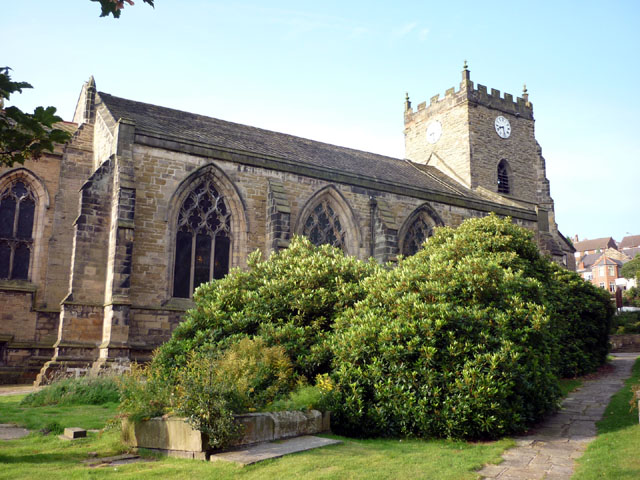Post written by Dr. Susan Thompson, Manchester Medieval Society Secretary
 |
| Sawley Abbey |
Each year MedSoc organises an excursion to one or more places of interest and this year we managed to fit in four. Our first stop was at
Sawley Abbey, founded in 1146 on land given by William, third Lord Percy, and the Percys, Northumberland’s greatest family, remained patrons of the abbey for much of its existence. In 1296 Stanlaw Abbey in Cheshire was refounded at Whalley, nine miles from Sawley, and the two Cistercian houses immediately quarrelled. Their lands adjoined and they squabbled over grain supplies and fishing rights in the River Ribble. The feuding officially ended in 1305, but the monks of Sawley, the senior foundation, continued to feel aggrieved. Sawley was considerably poorer than Whalley: it was impoverished by litigation, the ‘cruel and inhuman spoliation’ that accompanied Scottish raids about 1320, and the expense of providing board and lodging to travellers – unlike many Cistercian houses it lay on a busy main road. In spring 1536 Sawley surrendered during Henry VIII’s Dissolution of the Monasteries. However, that autumn, during the northern rising known as the Pilgrimage of Grace, the abbey was restored under a new abbot, William Trafford. The rebellion failed and Trafford was hanged at Lancaster in March 1537 and the abbey immediately plundered of its valuables. During the following three centuries all the high-quality stone was taken and reused in neighbouring farms and cottages, and many of the abbey buildings disappeared. In 1848 the first archaeological investigation of the ruins was undertaken, and during the twentieth century the site was taken into the care of English Heritage, cleared of debris and conserved.
 |
| Whalley Abbey |
Having walked round the site and identified as many of the buildings as possible we went on to the nearby abbey of Whalley where the main site of interest was expected to be the 14th century gatehouse to the Abbey; Laurence Nowell went to school here.
Whalley Abbey, second richest of Lancashire’s monasteries, was founded in 1296, when the monks of Stanlaw moved there from their flood-prone site on the Cheshire shore of the River Mersey near Ellesmere Port. Most monasteries were demarcated by gatehouses that prevented access by any except authorised visitors, allowed the gatekeeper to keep a close watch on traffic and provided basic defence in times of military and political insecurity. At Whalley, as at other monasteries, there was a steady stream of beggars and poor travellers seeking food or help, which the monks could not readily deny. Thus, the gatehouse was also the place where alms were dispensed and food and drink given to the poor.
 |
| Rufford Old Hall |
However, we had arranged to visit the parish church of St. Mary first and we were met here by an official guide to the church, Mr. Thorpe. He proved to be a mine of fascinating information on the building which dates from the early 13th century. The church contains excellent medieval and post-Reformation woodwork, but the treasure of Whalley is the set of clergy choir stalls rescued from the abbey. They were carved in about 1430 and, rare among medieval works, the name of the carver survives, a Mr. Eatough. There are also three Anglo-Saxon crosses in the churchyard. By now it was time for our next port of call,
Rufford Old Hall, where we had lunch. This is Lancashire’s finest Tudor building with a timber-framed great hall built in the late 15th century to a late medieval pattern. The hall has a ‘movable’ screen, the only surviving example of its type, and it is said that a young Will Shakespeare performed here. The house contains furniture, paintings and armour and there are gardens and pasture to the rear and side of the hall and woodland at the front. The hall is reputedly haunted by a grey lady, Queen Elizabeth I and a man in Elizabethan clothing.
 |
| Church of St. Thomas the Martyr, Up Holland |
Our final stop for the day was at
The Church of St. Thomas the Martyr in Up Holland. The oldest part of the church is the nave, dating from the 14th century. The tower was built in the late 1400s and the present chancel was added in 1882-86. Up Holland Parish Church was originally a Priory, founded in 1307 as a college for a Dean and twelve secular priests, by Sir Robert de Holland (b.1270, Up Holland, d.1328, Borehamwood, Herts), secretary to Thomas Plantagenet, Earl of Lancaster. Sir Robert was married to Maud, daughter and heiress of Alan, Lord Zouche of Ashby. It was dedicated to St. Thomas the Martyr. Charges of misbehaviour led Walter de Langton, Bishop of Lichfield, to convert it to a Priory with twelve monks in 1319 - the last foundation of its kind in pre-Reformation England. In 1323, King Edward II stayed at the Priory for a fortnight during his Royal Progess in the north country.
By the Dissolution in 1536 there were only five monks and twenty-six servants with an income of around £78, so the Priory was closed, even before Henry VIII began to close the smaller monasteries. Little can be said of the remains of the monastic buildings - they were to the south of the church but did not join it except in the western range of claustral buildings. Part of the western wall is standing; it was of two storeys with a row of windows on the west. In 1546 a chamber was mentioned at the west end of the chancel, which may be that on the south face of the tower, the roof corbels of which still remain.















